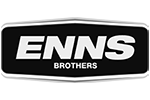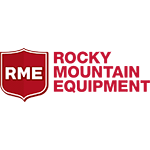In the summer of 2012, the Comfort Inn Brandon invited the Manitoba Agricultural Museum to display an artifact on the lawn of the hotel. As a Museum artifact on display would give the Museum great public exposure, the Museum agreed to this invitation and moved a non operational steam engine to a display pad on the lawn and installed signage.
The steam engine went on display in Brandon is a J. I. Case 25-75 steam engine built in 1907. 25-75 refers to the horsepower as 431949_10151070506771293_989955807_nthis engine developed 25 horsepower at the drawbar and 75 horsepower on the belt. This engine was capable of both plowing and driving belt powered machinery such as a threshing machine. From the gear train wear on the engine, it has seen hard work plowing and probably broke many acres of Manitoba Prairie.
The engine was donated to the Manitoba Agricultural Museum in the early 1960s by Joseph McMurachy of McConnell, Manitoba. The McMurachy family was a Pioneer family in the McConnell area and owned the engine since new. In the late 1970s age finally caught up with this veteran, the engine’s boiler failed inspection and the engine was retired by the Museum.
caseguardianThe engine was moved out to the main gate to the Museum to act as a gate guardian. In 2012, when an opportunity arose to place a Museum artifact on display in Brandon, this engine was chosen to go on display as it has some historical significance in the Westman area.
Mr. Joseph McMurachy was the person who discovered and saved the genetic material that was developed into the rust resistant “Selkirk” wheat variety in common use in the 1950s. In 1930, while cutting a field of wheat severely affected by rust disease, Mr. McMurachy noticed three plump heads of wheat on the table of the grain binder. These heads were unaffected by rust. He saved the three heads as they were unaffected by rust and replanted the seeds in order to multiply the wheat. In 1935, Mr. McMurachy supplied some of these seeds to the Federal Department of Agriculture, the Brandon Experimental Farm and the Winnipeg Cereal Breeding Laboratory. By crossing this wheat with other wheat varieties, the rust resistant Selkirk variety of wheat evolved. Selkirk was in wide usage from 1953 through the 1960s.




































